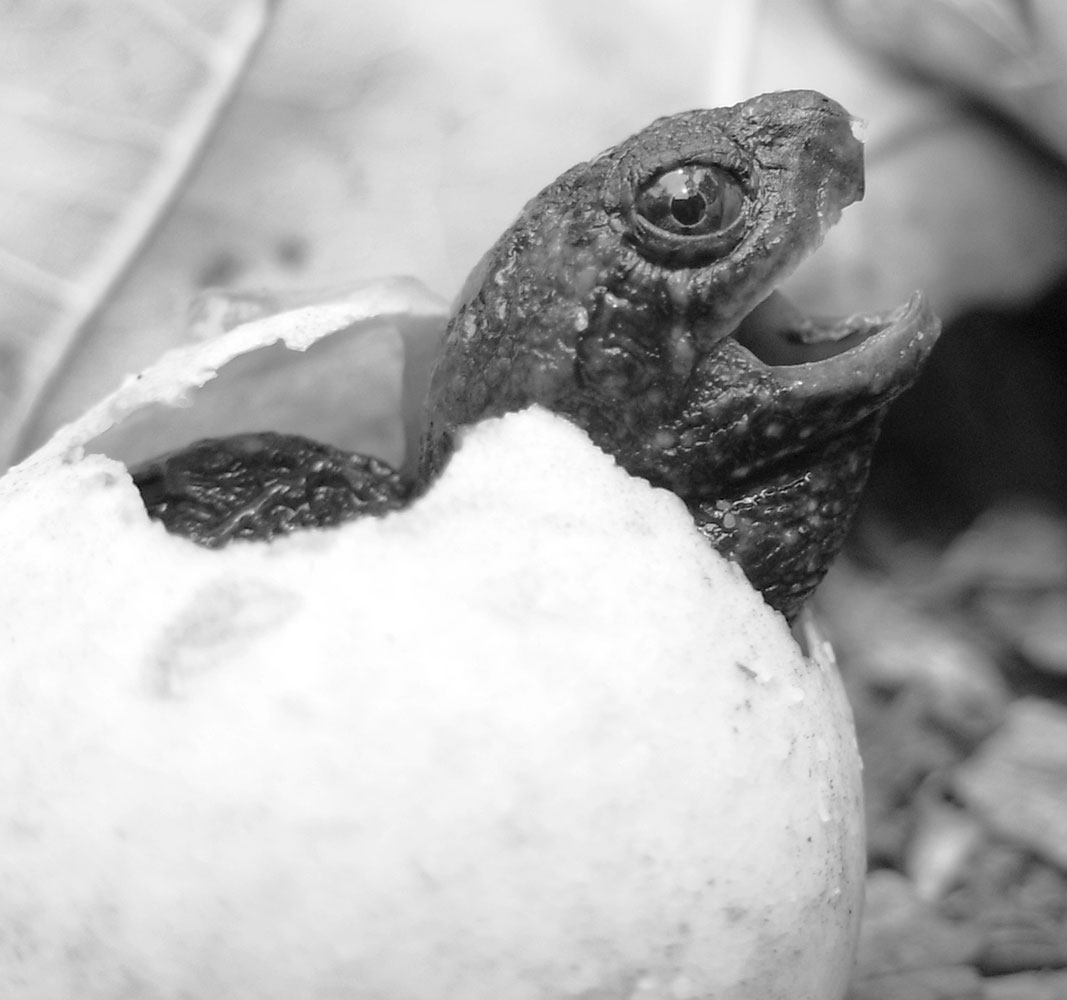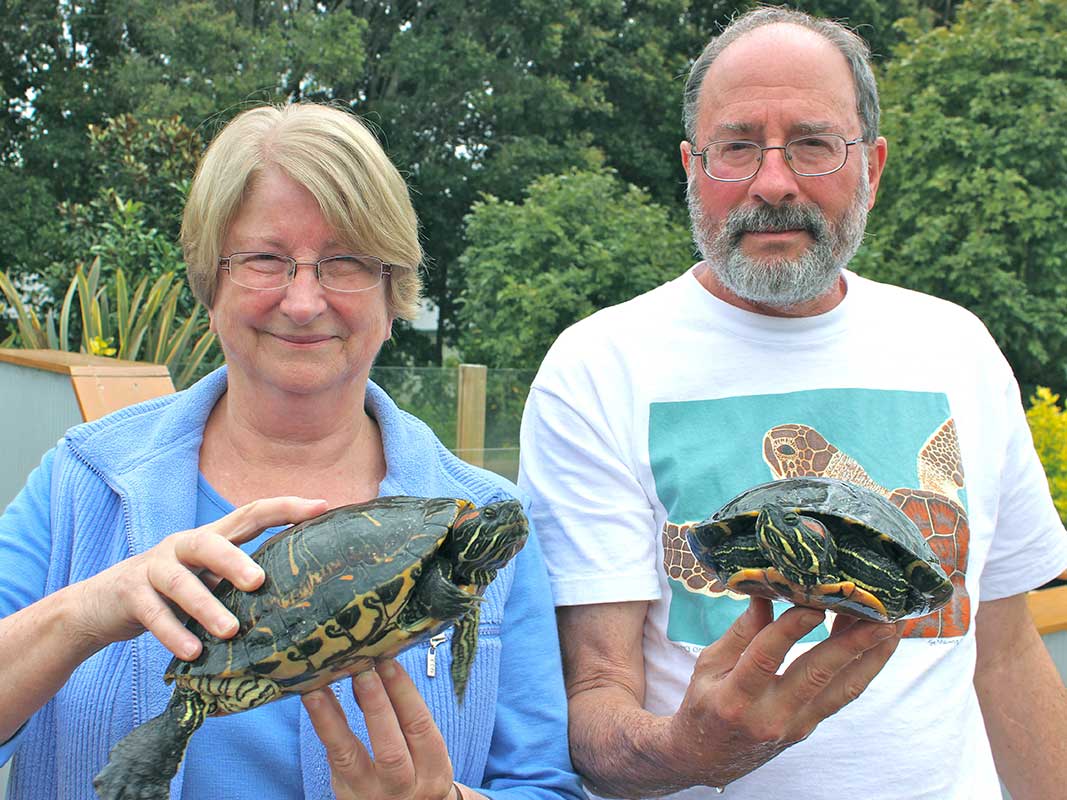Welcome to our website. The purpose of this site is to share with you what we’ve learned about how to induce turtles to lay their eggs. We have methods to induce healthy turtles to lay their eggs and other techniques that can be used for turtles that are egg bound (dystocia) and have been unable to lay their eggs because of disease, malnutrition or circumstances.

The prostaglandin induction technique (PIT) instructional. Learn how to do it now.
In a captive situation it can be very difficult to get turtles to lay their eggs naturally. The female will often choose to retain the eggs if the soil required to dig her nest is not just right. To be “just right” the soil has to be the correct consistency, temperature, and have the right odor and moisture levels. Sometimes turtles will chose to only oviposit in the shade, full sun or under structures like plants or fallen wood, so the best conditions can be difficult to provide in captivity.
2007 Published Article:Almost all the procedures for inducing turtles in this article are outdated now but the review of the physiology of reproduction is still accurate.
From 1978 to 2006, oviposition was induced in 13 North American turtle species. Of the 245 inductions, 195 involved the use of oxytocin alone, 22 used arginine vasotocin (AVT) alone, 13 used a combination of oxytocin and ketamine, eight combined propranolol and oxytocin, and seven propranolol and AVT. The relative viability of Chrysemys picta picta eggs obtained from natural nests and via oxytocin induction was also evaluated. The oxytocin induced eggs were as viable as natural nest eggs. Suggested dosage ranges for oxytocin used alone vary from 0.7-4.0 units per 100 grams depending on species.



